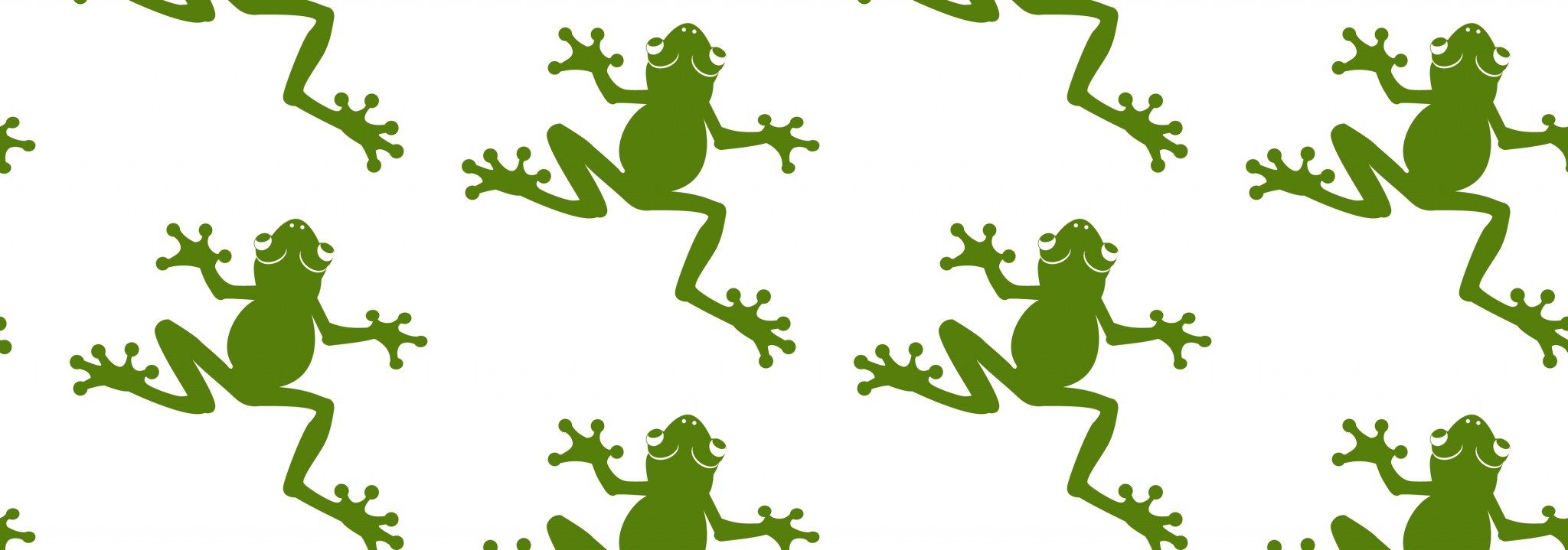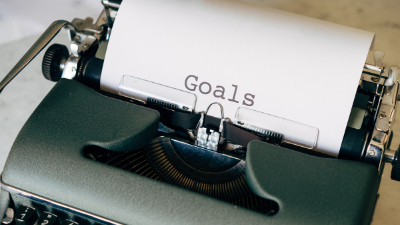 In the third installment of the “Finding Power Through Productivity” blog series, I decided to figure out if the “Eat That Frog” productivity method is a good fit for me. Read on to discover the pros and cons of the method and see if you’re interested in trying it (and learn about where in the WORLD the name “Eat That Frog” comes from!)
In the third installment of the “Finding Power Through Productivity” blog series, I decided to figure out if the “Eat That Frog” productivity method is a good fit for me. Read on to discover the pros and cons of the method and see if you’re interested in trying it (and learn about where in the WORLD the name “Eat That Frog” comes from!)
And, if you find yourself wanting to try out another method, check out more productivity hacks in my Pomodoro Technique and Flowtime Technique blog posts.
What is the Eat That Frog method?
The technique was created by Brian Tracy, who wrote Eat That Frog!: 21 Great Ways to Stop Procrastinating and Get More Done in Less Time. Brian found his inspiration for the method after hearing an old Mark Twain quote, which said, “Eat a live frog first in the morning and nothing will worsen your day.” While that quote emphasizes getting the “worst” of your day out of the way first, Brian puts a spin on the quote. He says you should not tackle your worst tasks at the beginning of each day; instead, use that time to work on your most IMPORTANT tasks. (Until I did further research, I definitely thought the method was referencing doing your least-desirable tasks first). The method is all about tackling what’s most important based on deadlines and priorities.
Productivity writer Marija Kojic breaks down Eat That Frog into three steps:
- Label your tasks to identify your “frog” (your most important task).
- Work on your “frog” first thing in the morning.
- Once done, shift your focus to less crucial tasks in your schedule.
If you have multiple frogs, that’s perfectly normal! Tracy suggests ranking your frogs using the ABCDE technique (labeling A as the most important tasks and E as tasks that can be eliminated) to determine your most important frogs to eat.
Why is this method said to be effective?
The method helps you give more attention to your most critical tasks and accomplish them as efficiently as possible. It’s easy to procrastinate certain tasks, particularly ones that are difficult or require large amounts of time. However, the critical tasks are often the ones that have the most positive long-term impact, so the method enables you to take small, consistent steps that will push you closer toward your big-picture goals.
Kovic even goes as far as to say that there are certain theories that support the method, such as the serial position effect and the attention decrement hypothesis (which states that people are more likely to pay attention to information they hear first vs. information that follows). This effect and hypothesis correlate with the idea that focus is heightened at the beginning of the day.
How did you use the method day-to-day?
In the book, Tracy emphasizes that “every minute you spend in planning can save you five or 10 minutes in execution.” Based on this thought, the process for figuring out my daily frogs actually began days before I started working on the frogs. Every Friday, my supervisor and I meet to discuss tasks and goals for the upcoming week. After our meetings, I would use the ABCDE system to figure out what my most important tasks were for each day in the upcoming week. When Monday began, I already had my frogs ready to go. The pre-planning made life a LOT easier.
I also used the project management software Monday to keep up with my tasks. Monday allows you to:
- Prioritize tasks
- Set deadlines for tasks
- Create subitems for your tasks to help you meet your goal
All these aspects are a huge part of the Eat That Frog mantra and helped me immensely in the preparation stage.
(I will note that much of the research I found suggested using the Eisenhower Matrix to prioritize tasks. It’s a visual that is more simple than using project management software. While it’s not my cup of tea, as I appreciate the level of detail project management software gives, I can see where others may enjoy the broad spectrum the matrix provides).

What were your findings?
JOURNAL ENTRIES:
- September 9: After looking at the tasks I needed to get done today, I realized I definitely had an “A frog” that I needed to tackle and NOT procrastinate on, which was rewriting and reformatting THREE blogs to fit one of our audiences. I had several choices: sit in my office and let the task get more intimidating as I thought about it more, do several little tasks that are not a priority but will get my mind off the big task…OR actually take the time to knock out the “frog” of the day. So, I made a cup of coffee, sat down at my computer, and told myself that until I get this done, no other tasks will be worked on. Yes, I got interrupted a few times and had to answer a phone call or two, but that was my main, focused task. I knew it needed to be done for our marketing purposes, so I got it done. I’m honestly typically not a procrastinator, so the task wasn’t high pressure. It was just a big task. I felt good after being highly productive and getting the rewrites done right off the bat!
- September 17: This morning, I had a blog that I needed to finish writing and editing. I knew it was a bigger task, and it was important we publish it soon, so I decided to “hop” right in (no pun intended). It felt SO good to be done with the process before 9 a.m. and to know I had focused intently on the task at hand to get things done! Yay for a great start to this rainy Thursday!
- September 25: Today, I had to start off my day with a task that came up that wasn’t my frog. When I completed that task, I did work on my frog that was highest in priority. Every Friday, I create a weekly report that my supervisor and I talk about in our afternoon meeting. It’s not difficult, but it is important and must be fully completed before the meeting. It also cannot be done before the day it’s due in order to analyze everything I am reporting on. It did feel good to have the spreadsheet finished several hours before our meeting started! This reiterated the importance of prioritizing to me.
Pros:
- Focus is enhanced. Setting aside designated time for certain tasks allows you to place attention on one task (and in this case, your most important one) instead of trying to hop around between multiple tasks without any real accomplishment.
- It adds structure to your daily routine. By breaking down your workload into separate tasks and ranking them in priority, you add an element of structure to your routine.
- It promotes the “deep-work” mindset. Becky Kane, a productivity and teamwork writer, states that there are many distractions in our workplace and those distractions often prevent us from focusing well. Eat That Frog gives us the space to concentrate on tasks that help us in working toward meeting our goals and getting rid of distractions.
- You free your mind when you eat your frogs. Many advocates of Eat That Frog say they feel more at peace once they finish their “big, bad task.” Procrastination is eliminated, which brings them feelings of satisfaction throughout the rest of their day.
Cons:
- You MUST plan. You will need to know in advance what tasks you are going to work on and how to prioritize them well. Planning is necessary but can be time-consuming. Consider how much time you will need to truly figure out your frogs.
- Unpredictability and Eat That Frog are not the best combo. Some users view the method as “rigid” and “unrealistic.” For example, if you work in an environment where new deadlines are being created constantly, or you often have unexpected meetings and tasks pop up, then concentrating on your frogs may be more difficult than for someone who creates more of their own schedule.
- The method has many aspects to it. Eat That Frog is a 21-principle method, and the principles have extremely involved processes. While you can try it out on a smaller scale, doing it regularly and intensely requires more commitment.
- Effectiveness may correlate to when you’re most efficient. The method requires high amounts of concentration in the morning. This isn’t a one-size-fits-all approach, and you have to find where you work best. For example, some slowly warm up in the mornings, have height productivity before lunch, and then relax right after lunch as they work their way back up to higher productivity levels. Some also may view the method as a negative start to the day, which causes them to dread coming to work

Who would you recommend the Eat That Frog method too?
Todoist has an article with a great recommendations list, saying the method is perfect for anyone who:
- Struggles with procrastination
- Gets a lot done but isn’t making progress on the important stuff
- Has a hard time sticking to a productivity system
- Has trouble deciding what to work on at any given time
- Feels overwhelmed by their to-do list
I would add to this list that the method is most effective if:
- You work best in the morning
- If you set your own agenda and don’t have to pivot directions often
The Last Word:
I found that Eat That Frog was more difficult to implement into my workflow than other methods I had tried. Many times, I had other obligations in the morning that were more pressing, or I found that I had minor tasks that needed to be done during the day that weren’t necessarily typical frogs (meaning they weren’t super important or difficult, but HAD to be done). Personally, I am most productive after 10 a.m. when I have had a couple of hours to establish a good workflow. I gravitate toward completing minor tasks in the morning and then focusing on my bigger goals/frogs later. I also like to finish minor tasks so I can give all my attention to tough tasks without any “nagging” sensation of “you have five minor tasks you still need to complete.” It was satisfying to complete frogs, but I liked doing so on my own timeline. That being said, those who operate in a different mindset may find Eat That Frog to be more beneficial than I did. I would consider the factors mentioned in this article, such as when you’re most productive, if you’re able to create your own schedule, and if you have trouble making progress on your long-term goals daily, as you decide whether the method is right for you.
Bonus Content: Eat That Frog Tools
If you’re looking to implement Eat That Frog into your workflow, you will need tools to help you visualize and then prioritize your task list. Here are some tools to help you get started:
My favorite project management software is Monday. We use it in our office, and I love it! It’s especially applicable for Eat That Frog because you can organize your tasks by deadline and priority level, create subitems for your tasks (which is great for setting goals that require several steps to meet), and change the status of your tasks.
Monday is available via desktop apps (Mac, Windows), a browser extension (Chrome), and through mobile apps (iOS, Android). Monday’s pricing plans are unique in that the prices for Basic, Standard, Pro, and Enterprise plans differ based on the number of users on the account. Find personalized pricing quotes here.
Other helpful Eat That Frog tools are:
- Clockify: A free time tracker and time sheet app.
- Todoist: A productivity tool used to organize to-do lists and manage projects.
- Check out their article on incorporating the method using their system.
- Available via desktop apps (Mac, Windows, Linux), browser extensions (Chrome, Safari, Firefox), mobile apps (iOS, Android), and other apps such as watches and email plugins.
- Pricing varies by plan, and there is a free version available.
- Asana: A task management software for teams to organize projects.
- Trello: A collaboration tool that allows teams to organize and prioritize projects.
- Available via desktop apps (Mac, Windows), browser extensions (Chrome, Firefox, Edge, Safari), and mobile apps (iOS, Android).
- Pricing varies by plan, and there is a free version available.
ABOUT THE AUTHOR:

Hi! My name is Marah Whitaker (think Laura with an M). I am the Marketing Assistant for UTC Center for Professional Education. During the workday, I spend time writing blog posts, creating content for social media, developing email campaigns, and building relationships with our customer base. During my free time, you can find me getting lost in a good book, having spontaneous dance parties, playing piano, and going to Buffalo Wild Wings on Wing Night. Professionally and personally, I aspire to live by the Mr. Feeny quote, “Dream. Believe. Try. Do Good.” I strive to use my passions to serve others and contribute positively to the world around me.
Connect with me on LinkedIn.